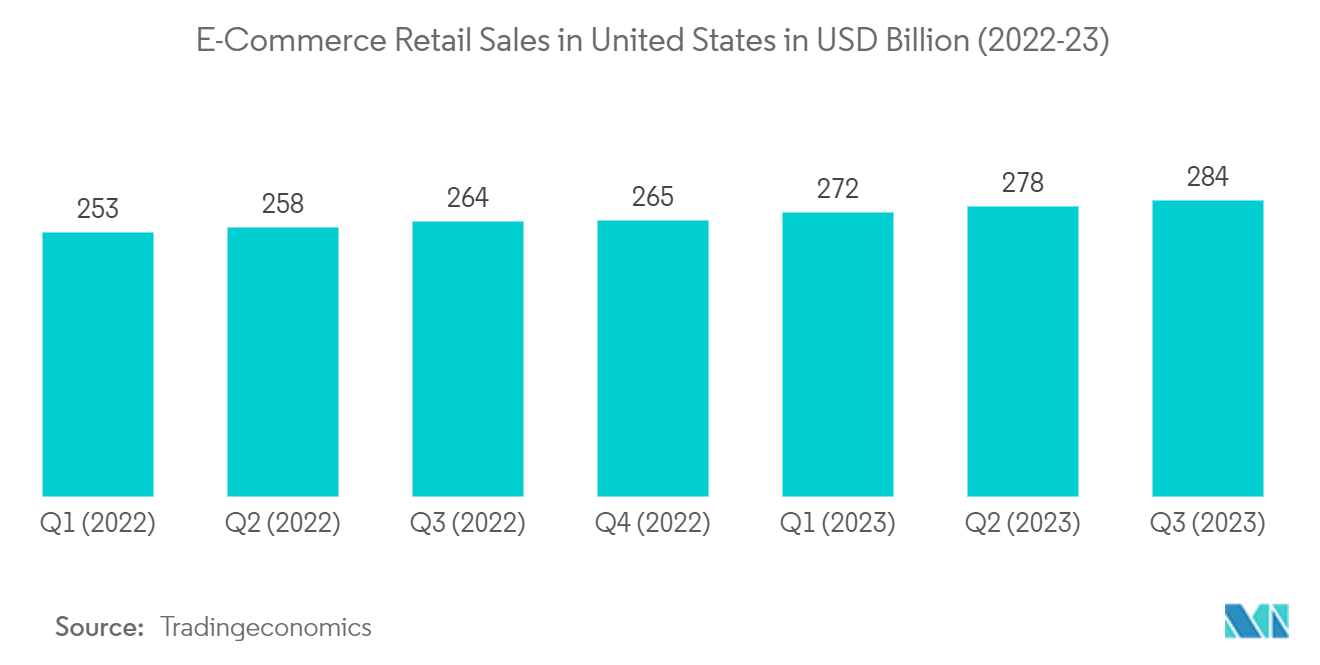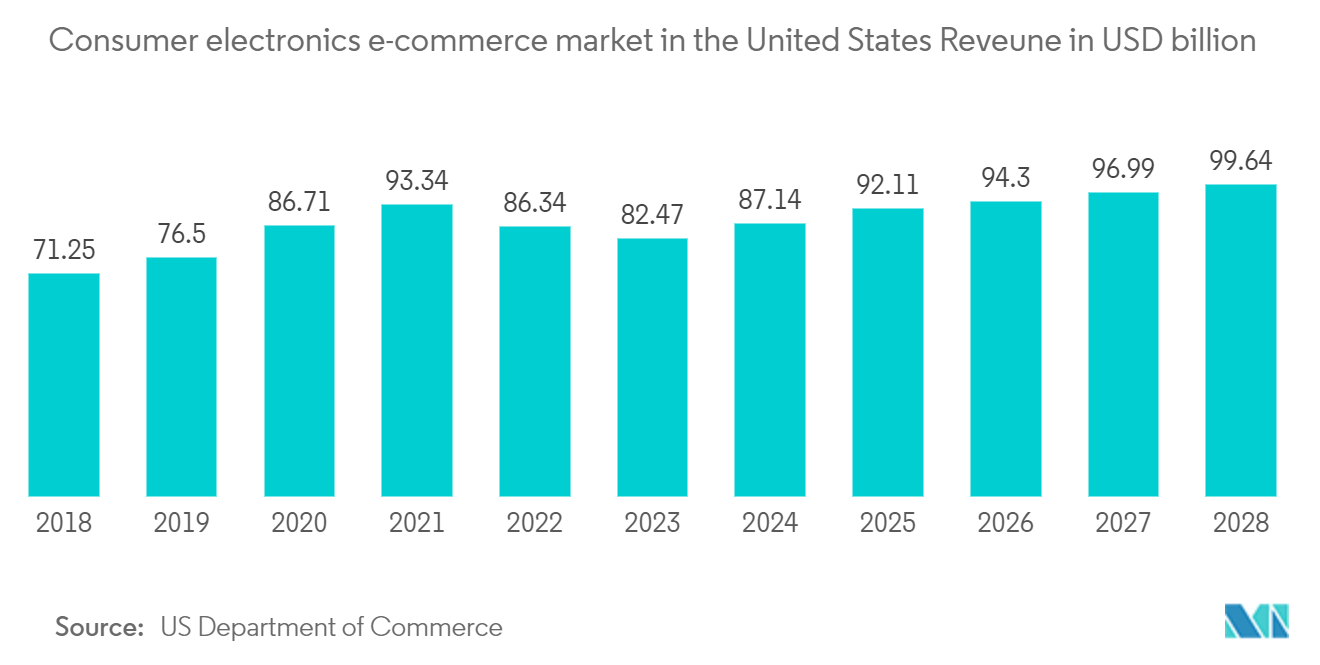Market Trends of North America Automated Guided Vehicle (AGV) Industry
Retail to Hold Major Market Share
- Globalization and online and bulk retail advancement have raised the need for automated guided vehicles (AGVs) in the retail industry owing to their growing installment in factories and warehouses. Service quality and consumer happiness are the primary competitive factors in the e-commerce market.
- Companies are delivering a single-day delivery option with certain extra charges. With increasing disposable revenue in advanced and emerging economies, the commercial viability of such schemes is rising significantly. E-commerce warehouses carry out the single-day delivery process with the help of AGVs.
- Installing AGVs in the retail industry has allowed companies to automate intralogistics tasks, such as sorting, selection, and palletizing, thus improving efficiency. The usage of AGVs by the e-commerce industry is growing substantially as industry incumbents try to roll out a reliable storage process and enhance efficiency.
- For instance, Movexx AGV1000 can automatically connect & disconnect trolleys with two swivels & fixed castors, capable of moving freight of 1000 kg. It is a low-maintenance machine with a fast-change battery system for 36 Ah lithium batteries, creating charging fast and easy.
- Retailers like Amazon and Walmart use mobile robots in their warehouses & retail stores for inventory handling, scanning, and cleaning. Automated guided vehicles (AGVs) require operating systems, data collection, and data-analysis tools that are vital and compatible with the current retail systems.
- Also, according to Statistics Canada (StatsCan), in July 2022, the e-commerce retail sales in Canada amounted to CDN 3.15 billion (USD 2.36 billion) and are anticipated to grow further during the forecasted period and drive the market in the region.

The United States to Hold Major Share
- The US is one of the biggest and most developed markets for automated solutions globally. The robust economy, with substantial port traffic, grown e-commerce activity, and critical manufacturing indices, all resulting in notable growth in manufacturing, drive the need for automated solutions around the logistics sector in the country.
- Sectors like retail, automotive, food and beverage, and pharmaceutical are the country's largest sources of demand for automated guided vehicles. Food and beverage is the largest industry, representing over 35% of US packaging shipments annually.
- This factor forms a substantial need for AGV equipment, like automated forklifts, unit load AGVs, tug AGVs, assembly lines, and special purpose products, broadly installed in food & beverage manufacturing establishments. Moreover, the strict food safety regulations & preference for lower human intervention in the production process are anticipated to grow the need for the food & beverage industry during the forecast period.
- The country is noticing a fall in middle-skill occupations, like manufacturing & production jobs, and growth in high & low-skill works, like managerial jobs on one end and jobs that aid or care for others. This trend is now popularly called job polarization, driving the adoption of automation of different repetitive, manual, and low-skill tasks.
- Additionally, due to low vacancies and a rise in the rental expenses of warehouses, enterprises are opting for smaller places to rent out for warehouse purposes. To optimize the productivity of these limited spaces, they are anticipated to install more automated solutions soon.
- Moreover, according to the US Department of Commerce, in the Q4 of 2022, the share of e-commerce in US retail sales stood at 14.7 percent, up from the last quarter. From October to December 2022, e-commerce sales of retail in the US hit almost USD 262 billion, the highest quarterly revenue in history.



